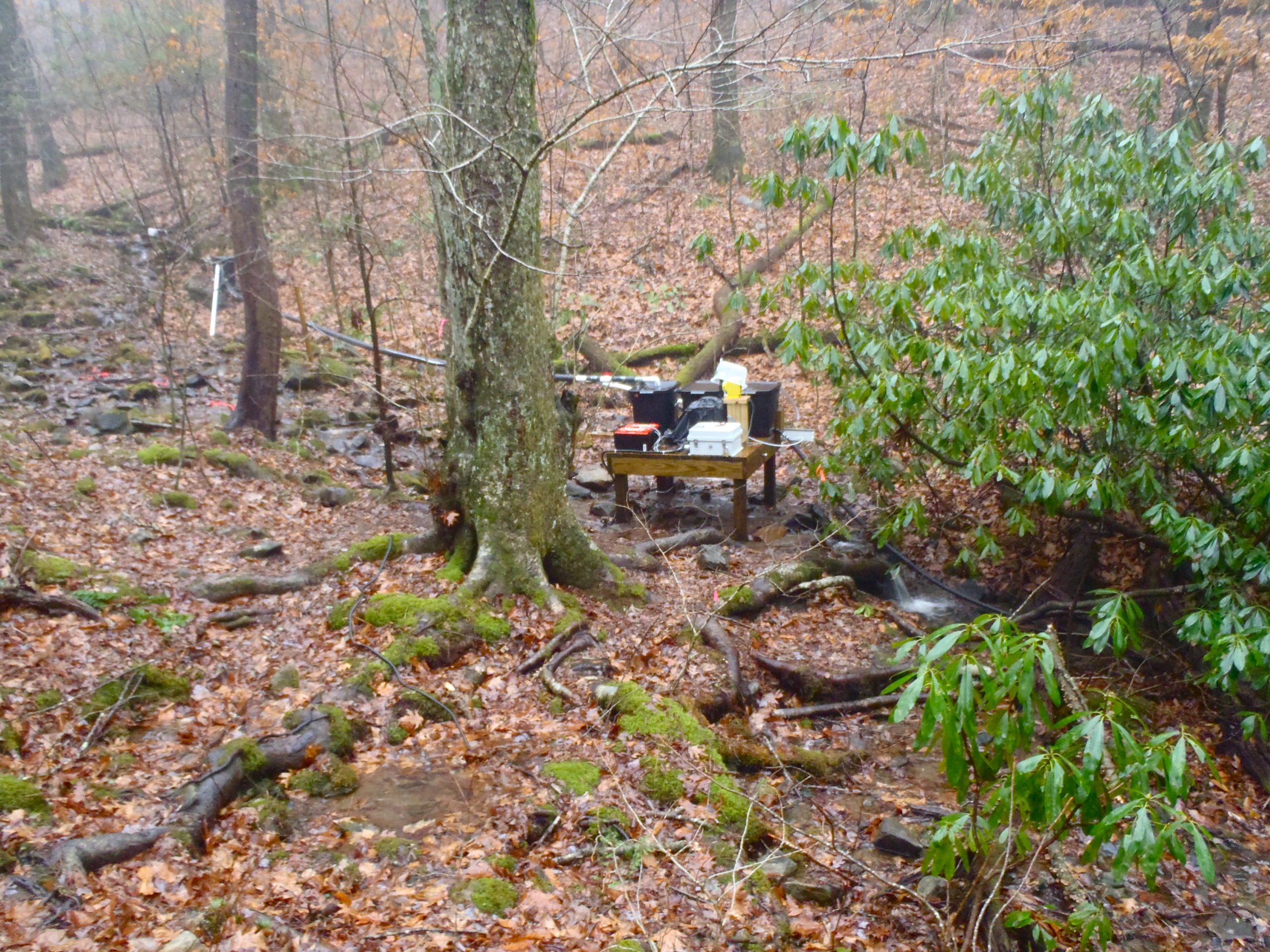This research addresses the following questions:
- How do excess nutrients affect the functioning of aquatic systems?
- What thresholds in concentrations need to be avoided to maintain stream health?
- How does the relative supply of nitrogen (N) and phosphorus (P) affect ecosystem functioning?
Project overview
Nutrient pollution is a leading source of impairment to streams in the U.S. (U.S. EPA and USGS reports) and globally. Human activities increase the concentrations of N and P in aquatic systems as well as their relative concentrations, which differ by watershed land use. We investigate the relative importance of N and P and the ratio of N:P in driving ecosystem responses in detritus-based streams. This research involves whole-stream enrichments of N and P, streamside channel experiments, and laboratory microcosm experiments.
Nutrient experiments and studies
We found excess nutrients affect heterotrophic microorganisms, stream macroinvertebrates, and energy flow pathways (Gulis et al. 2004, Cross et al. 2006, Rosemond et al. 2008, Davis et al. 2010, Suberkropp et al. 2010).
In more recent studies, laboratory incubations, and whole-stream nutrient additions showed the concentrations and ratios of N and P that elicit undesirable ecosystem changes, such as loss of nutrient retention (Bumpers et al. 2023), carbon loss (Kominoski et al. 2015, Rosemond et al. 2015), and altered food web pathways (Demi et al. 2019). Knowledge of these concentrations and ratios can guide management of aquatic ecosystems to maintain water quality for wildlife conservation and human utilization.
We have found that nutrient enrichment affects all components of stream food webs, with many examples of co-limitation of N and P. Different parts of food webs can also be differentially affected by N and P (e.g., Bumpers et al. 2015, Gulis et al. 2017). A global meta-analysis similarly showed effects of nutrient pollution across multiple trophic levels in both algal- and detritus-based food webs (Ardón et al. 2021).
